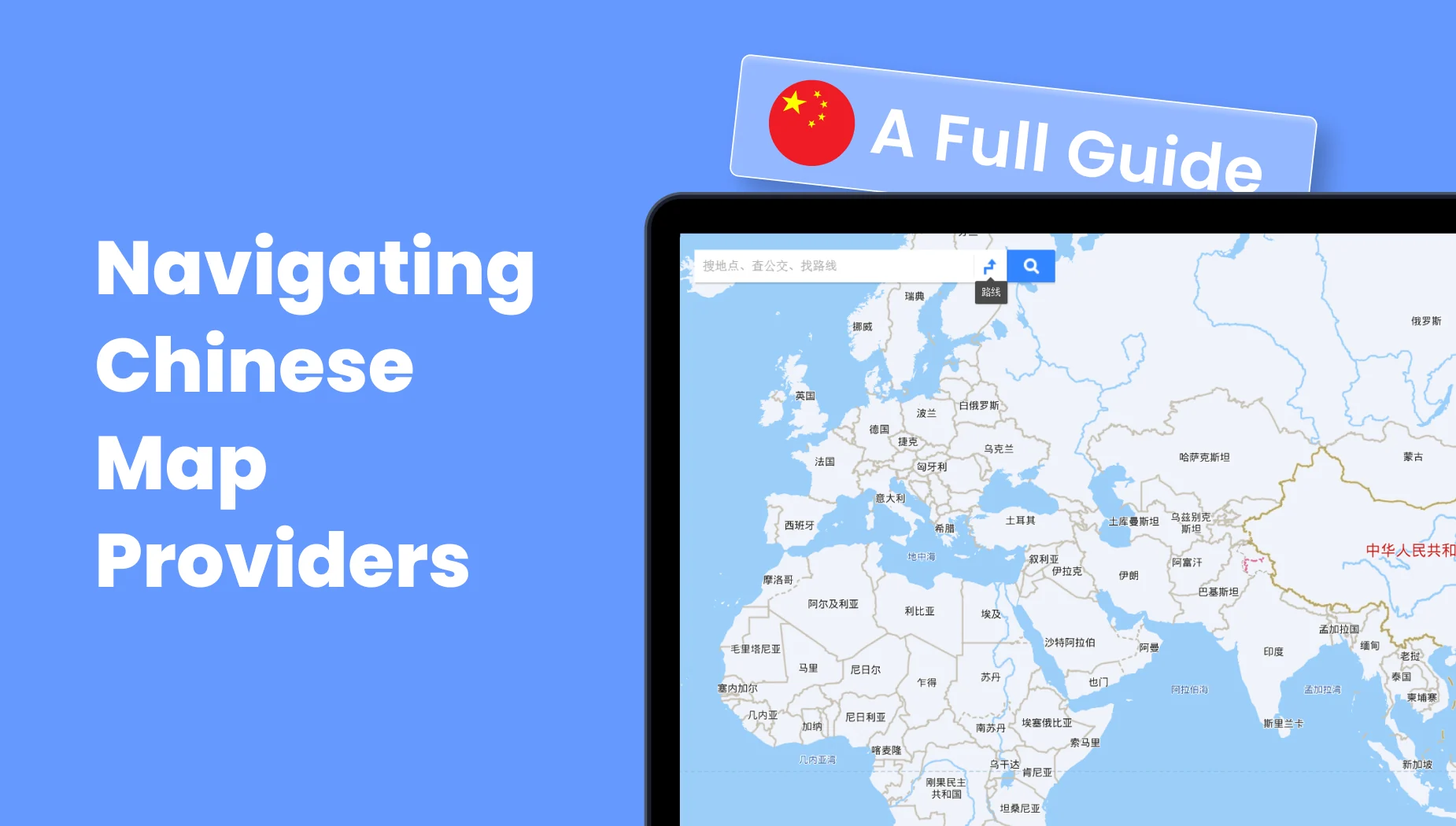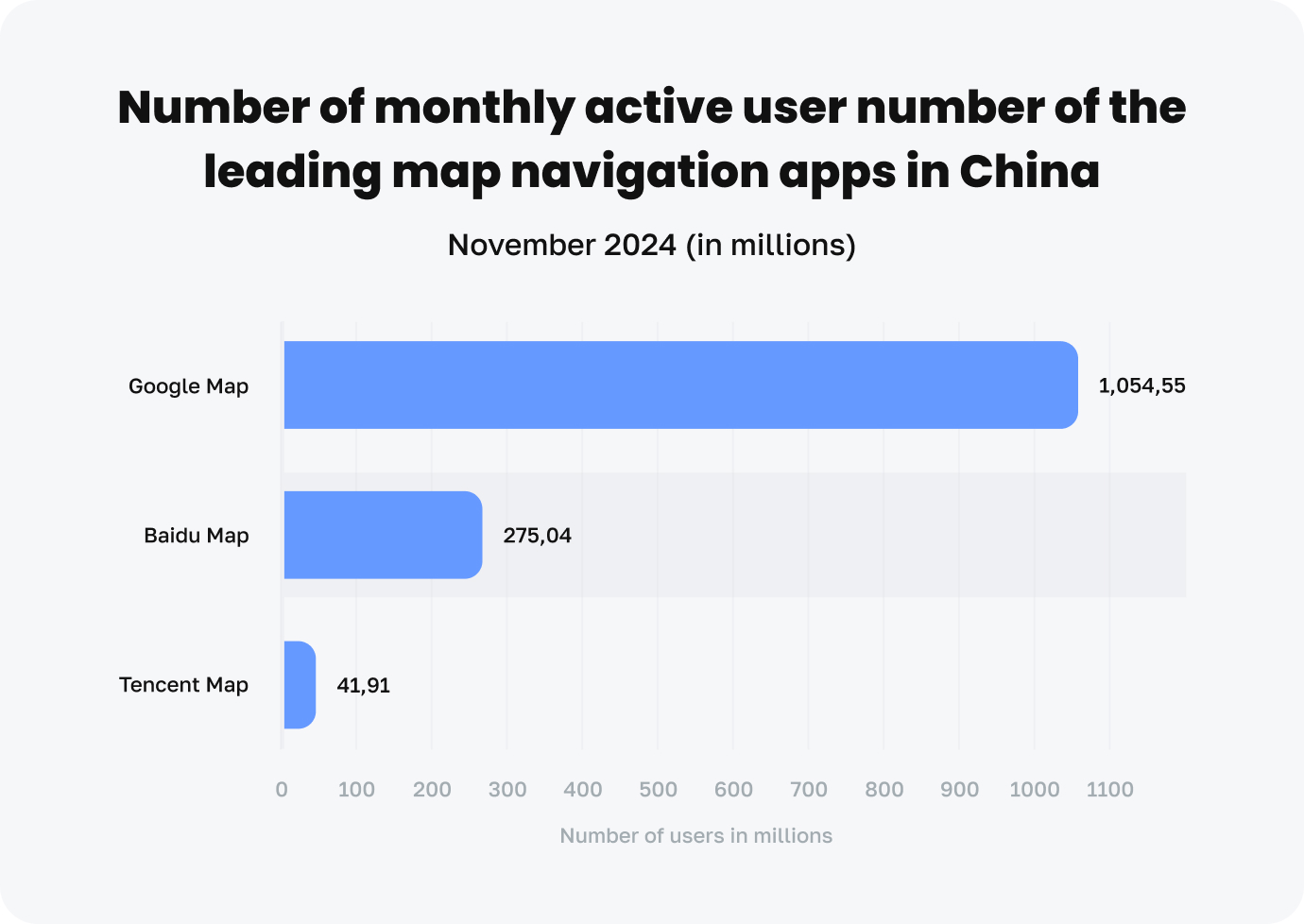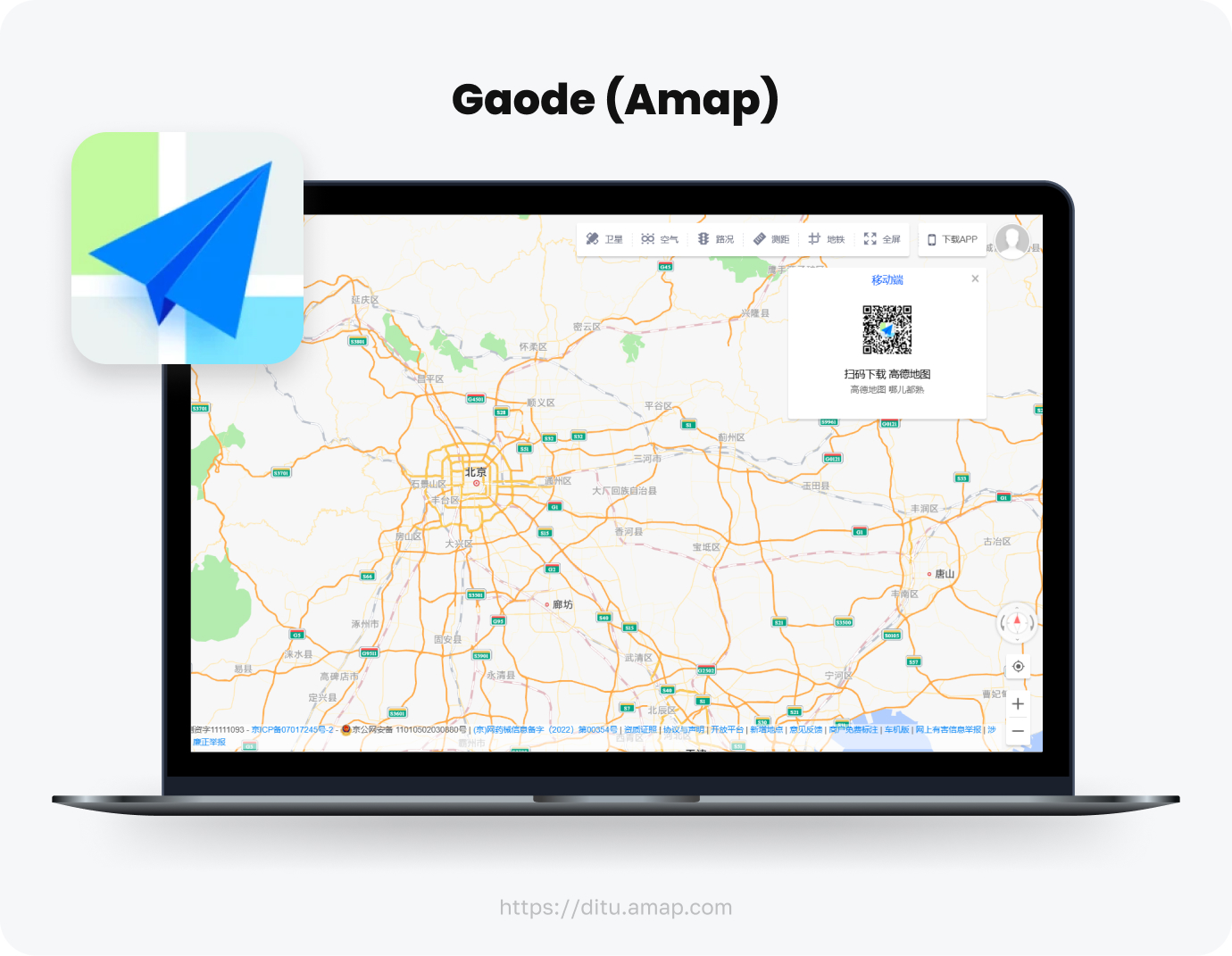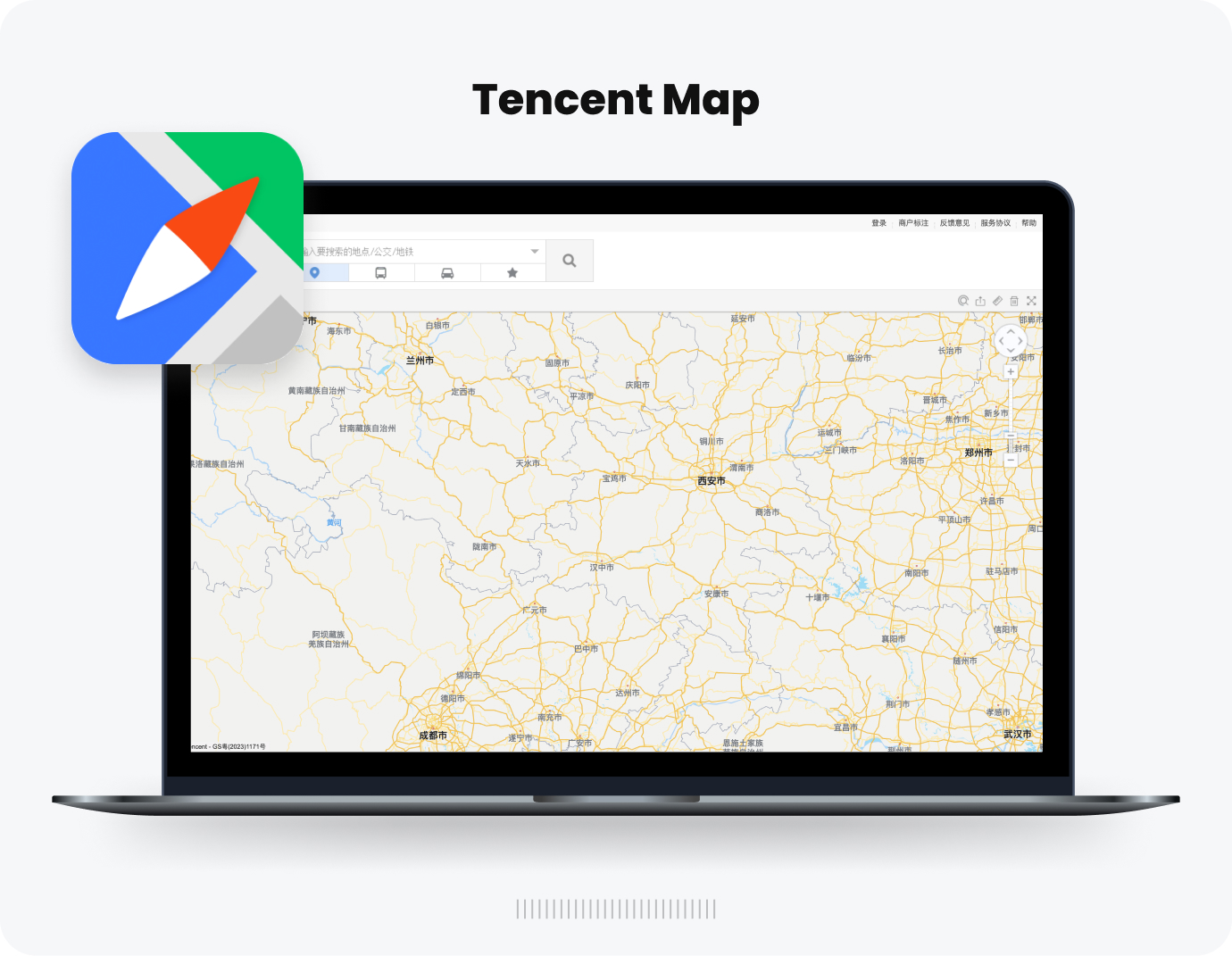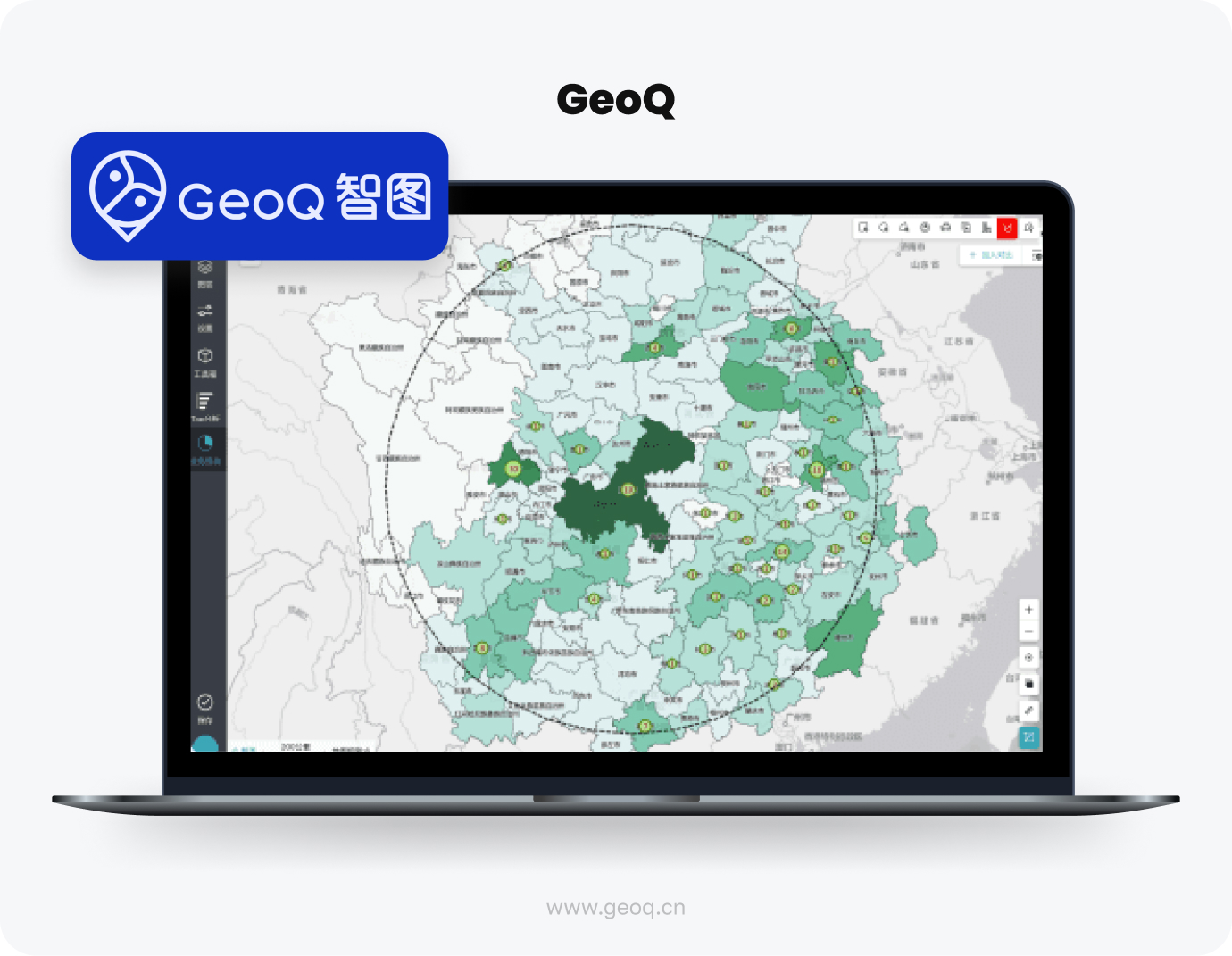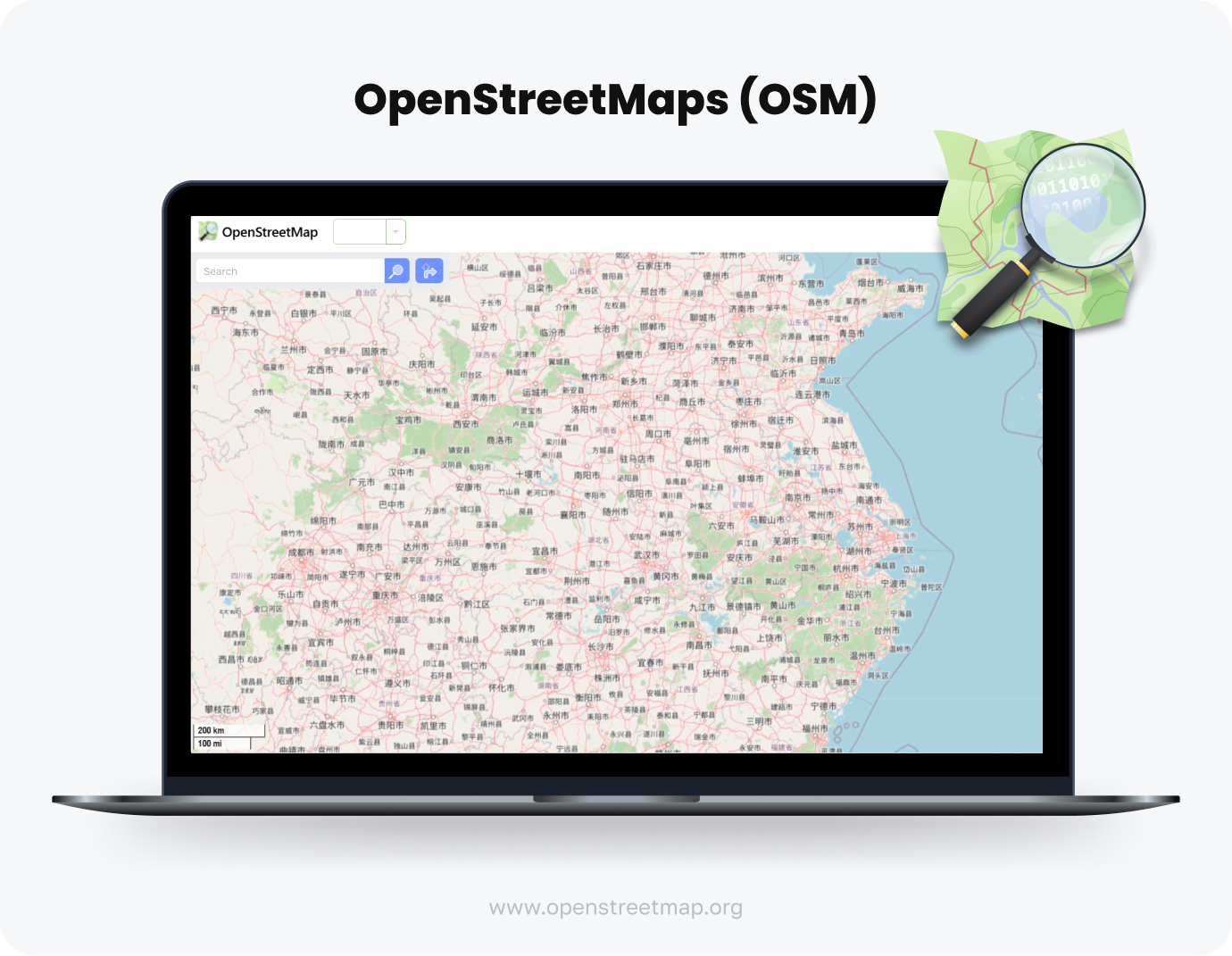Table of Contents
Imagine you plan a trip to China, filled with dreams of walking along the Great Wall, exploring the Forbidden City, and marveling at the futuristic skyline of Shanghai.
The twist?
Google Maps stays out of reach.
What, you might ask, doesn’t Google Maps work in China?
Yes. You need a Chinese map provider to replace Google services.
At the inaugural meeting of the Central Leading Group for Cybersecurity and Informatization, President Xi Jinping said, “There is no national security without cybersecurity.”
Since then, Chinese officials have increased their already severe control over everything online, including social media, online publishing, IT business models, and cloud data centers.
So, many foreign platforms, including all Google services, have been blocked ever since.
Instead, you’re thrust into a Chinese map app world that breaks every rule you learned before. There is no Chinese version of Google Maps with exactly the same features, and this hidden world of apps has its own language and rules.
We at JetRuby have experienced Chinese map quirks firsthand.
Although each Chinese map app shows you walking and bus routes and even points you to local eateries, much like a friend who knows all the best spots, the text on these apps is in Chinese, and you need a local phone number to register.
And if you’re trying to expand your app or service into China, you especially need to be aware of various important differences.
These aren’t just minor differences in map accuracy or street names.
The Chinese government enforces strict regulations about which services can operate in the country. As a developer, this means you might face roadblocks with licensing, data storage, and even which map services you can use.
In this guide, we’ll share our experience adapting a client’s app to Chinese geolocation reality and legal regulations. We’ll also discuss map alternatives, so you won’t have to ask any more questions about navigating without Google Maps in China.
Key takeaways
- Global mapping services like Google Maps are blocked or restricted in China. You’ll need to rely on local providers like Gaode, Tencent Maps, Baidu Maps, or others.
- China uses unique coordinate systems (GCJ-02 and BD-09) that differ from the global standard (WGS-84). If you don’t account for this, your app’s markers could be hundreds of meters off.
- Building apps in China requires local servers, business licenses, and compliance with strict regulations. Ignore these, and your app could face delays, blocks, or legal issues.
- Real-time apps (like ride-hailing or delivery services) are especially vulnerable to latency and data accuracy issues. Local infrastructure is key to success.
- JetRuby’s Staff Augmentation services can help you assemble a skilled team to tackle these challenges, ensuring your app meets Chinese standards without headaches.
About to launch a mobile app? What to choose — Native vs Hybrid? Get key insights in our blog post!
Introduction to China’s Complex Mapping Landscape
Google Maps in China, like many other global map services, face strict restrictions within the country. They either don’t work at all, work with huge delays, or fail to offer the same level of detail that we’re used to elsewhere.
Why does this happen?
China enforces strict rules on foreign tech companies, especially when it comes to services that deal with sensitive data, such as maps. The country protects its local businesses by limiting access to global services, including Google Maps.
This means that if you want to use a digital map in China, you need to find a local solution that complies with the country’s laws.
The selection of an appropriate map provider is crucial for developers who intend to adapt their apps or develop new ones within China.
Examining Top Chinese Map Suppliers
There are no Chinese Google Maps, yet there are a few local options, of course, with their own quirks and oddities, yet quite manageable and useful.
So, what map app to use in China? And what does China use instead of Google?
The most popular options include Gaode (Amap), Tencent Maps, Baidu Maps, GeoQ, and OpenStreetMaps. Each offers different strengths in data coverage, accuracy, and integration capabilities.
In November 2024, Gaode Map was the leading navigation app in China, with over one billion monthly active users, followed by Baidu Map with around 275 million users, and Tencent Map in third place.
Gaode (Amap)
Gaode (also known as Amap) is one of China’s most widely used map services. It is widely used as a China travel map app, which is another Chinese equivalent of Google.
It offers extensive coverage and highly accurate data. Gaode stands out for its high-resolution, detailed maps, especially in urban areas. It regularly updates its maps, making it ideal for applications that require up-to-date data for route planning or precise location tracking.
Tencent Map
Tencent Maps is another strong contender, especially in urban areas. The mapping accuracy in cities is 88.9%, backed by Tencent LBS data. Land use/cover data is 87.1% accurate, while nightlight satellite data has an accuracy of 85.5%.
Known for its deep integration with Tencent’s ecosystem, including WeChat, Tencent Maps provides a seamless experience for users in China.
GeoQ
GeoQ is a new player in the Chinese map market, but it has quickly carved a niche by focusing on professional industries such as construction, logistics, and environmental monitoring.
OpenStreetMaps (OSM)
OpenStreetMaps (OSM) is a unique, open-source alternative to commercial mapping services. Unlike the others, OSM relies on contributions from users around the world. By 2023, it had more than 10 million registered users.
Baidu Map
Baidu Maps is one of China’s most popular map services, particularly for users in northern and western regions. Baidu’s app usage has been growing steadily for the past two years. In March 2024, the Chinese search engine giant had about 676 million monthly active users on its app.
Known for its detailed maps and integration with other Baidu services, Baidu is a strong contender for urban-based applications. Some consider it a Chinese equivalent of Google Maps.
Note! Before leaving for your trip, download a couple of China map apps. It is for you to decide what Chinese map apps are the best alternatives to Google maps. Learn their basic functions so you can easily switch from Google Maps to Baidu Maps, GeoQ, or others.
Why use Ruby on Rails for product development? Discover the reasons why it remains fast, secure, and ideal for building web applications.
Data Coverage and Accuracy
Now, let’s talk about data accuracy.
You may not realize how much of an impact map accuracy can have until you run into problems in your own app.
Some Chinese map providers offer incredibly detailed street-level data, while others provide less comprehensive information.
This can be especially problematic for apps that require precise data, such as tracking deliveries or monitoring infrastructure like pipelines or electrical grids.
Integration and API Differences
Once you’ve chosen a map provider, the next step is integrating it into your app.
This is where things can get tricky.
While global map providers offer relatively easy-to-use APIs, Chinese maps providers may require you to jump through additional hoops.
Some of these providers offer open APIs that allow you to access advanced features like live traffic data or detailed street views. But others limit access to basic map tiles, meaning that you won’t be able to get all the data you might need.
Another critical factor is where you host your servers.
Many Chinese maps require that you host your servers within China to comply with local regulations. This is not a technical barrier but more of a legal one.
If you don’t follow these rules, your app could face slowdowns or, worse, get blocked altogether.
So, before integrating a Chinese map provider into your app, make sure you understand the licensing requirements and server localization rules.
By the way, if you are searching for reliable environments for your application, explore our 8 best Ruby on Rails hosting providers to ensure compliance and seamless performance.
When integrating the client’s app with Baidu, we encountered quite an obstacle — you need to register an account with the service to access a map provider API. However, you can only register if a registered local user confirms he knows you.
This was somewhat tricky, but the client found a local to help us with it. We can’t say for sure, but other map providers supposedly require the same.
Now, more on each map provider integration capabilities.
Understanding each provider’s strengths and limitations can help you select the best one for your specific project needs, ensuring that your app runs smoothly and legally in China.
| Feature | Gaode(Amap) | Tencent Maps | GeoQ | OpenStreetMaps | Baidu Maps |
|---|---|---|---|---|---|
| Data Coverage and Accuracy | Best for urban navigation, detailed street-level info, frequent updates; weaker rural coverage. | Strong urban coverage, includes public transport routes; limited rural data compared to Gaode. | Accurate for industrial use, decent urban coverage; limited outside major cities. | Does not offer satellite image layers. OSM is just about map data. Good urban coverage; relies on user contributions, less reliable in rural areas. | Detailed in major cities with features like street view; lags in real-time updates and rural detail compared to Gaode and Tencent. |
| Integration and API differences | Powerful API with real-time traffic, street views, and route planning. Requires local server hosting in China for full access and compliance. | Robust features like map rendering and urban-centric tools. Requires business registration and local server hosting. | API for enterprise needs with geospatial analysis tools. More technical to integrate compared to user-friendly options. | Open-source API, free to access, ideal for budget projects. Lacks real-time data and compliance for China. | Comprehensive urban services but requires local business registration and server hosting for full functionality. |
| Legal & Technical Barriers | Registration requires a Chinese phone number for access to advanced features. | Mainly for use in China, may not be accurate outside the country. | None for local use, outside China, users must follow GeoQ's data policies and licensing agreements. | Open-source, no legal restrictions but lacks Chinese compliance; can be slow or restricted for heavy traffic | Local hosting and business registration required. Uses BD-09 coordinate system. |
Rapid Team Expansion Scale your team quickly without wasting time or resources on hiring. Choose our staff augmentation solution and get the talent you need, when you need it.
Coordinate System Pitfalls and the Offset Mystery
China has its own mapping standards that differ from global ones.
The widely used global Coordinate Reference System (CRS), called WGS-84, defines locations using latitude and longitude. In China, the standard is GCJ-02. This system modifies WGS-84 by adding random adjustments for security, which usually shifts locations by 300 to 500 meters.
Baidu, a major map provider in China, has created another system called BD-09.
This system makes additional adjustments to GCJ-02 to protect its data from competitors. Baidu offers tools to switch between the three systems but only shows users how to convert from GCJ-02 to BD-09, encouraging them to use Baidu’s mapping services.
These location “offsets” can cause serious problems for apps that need high accuracy, like navigation and location-based services. Users may end up with incorrect directions or wrong store locations, making the app hard to use.
Practical Challenges of Building Apps in China
Building an app that works well in China takes more than choosing the right map provider.
Developers also need to deal with complex legal and technical issues.
One of the biggest challenges is the Great Firewall of China, which can significantly slow down access to foreign resources. This means that if your app relies on data from international servers, you might experience delays in delivering map data or other services.
Additionally, if your business model or product direction needs to significantly change to comply with Chinese regulations, consider learning how to pivot your startup strategy effectively to maintain momentum and growth.
Another issue is censorship. The Chinese government closely monitors the information that flows within its borders. If your app includes content or features that don’t comply with Chinese laws, it could be fined or even blocked entirely.
For this reason, it’s important to understand the country’s legal requirements and ensure that your app is fully compliant.
As you modernize your application, it can also help to stay on top of the latest Ruby on Rails updates. You might be interested in what’s new in Rails 8: upgrade features and benefits to keep your tech stack current.
Ruby on Rails is the right choice for a SaaS idea! Why? It offers businesses the tools to build scalable, reliable, and quick-to-market products!
How NeptunusDetect Overcame Mapping Obstacles
Here’s the story of our client, NeptunusDetect, a global technology leader and innovator in intelligent water loss and leak detection technologies. They decided to enter the Chinese market but faced challenges immediately.
When the company’s Chinese distributors placed some sensors, they found them located in a river.
Another problem was legal. To use map navigation software in China, the software and the company must be registered in China.
Switching to a local Chinese map provider and using the proper tools to convert coordinates solved the issue and ensured that their system worked as expected.
We worked with NeptunusDetect in two main steps: the Proof of Concept (PoC) and the Minimum Viable Product (MVP). In the PoC step, we connected the client’s API to check whether it worked with Chinese map providers.
Next, we created a system that let the client easily switch between map providers. This system helped us gather data from the client’s app. This was important for the client because different map providers showed cities and towns in different ways.
For example, one provider might show a small town in one spot, while another might show a waste lot or land property in the same place.
The costs for these providers also varied. At first, the client chose the free option with the self-hosted Open Street Map, but later, we switched to Baidu Map to better meet their needs.
We decided to opt for a combination of Leaflet and React libraries to combine map providers in a single application and compare them without dealing with each provider’s APIs.
Leaflet is a lightweight but powerful library for creating interactive maps, while React is ideal for building dynamic user interfaces.
We used the Leaflet.ChineseTmsProviders repository to simplify the integration of various Chinese map providers.
This tool’s ready-made configurations for various Chinese maps significantly speed up the map development and integration process and allowed us to test about eight map providers quickly.
To deal with China’s unique coordinate system standards, we used the gcoord library, which provided a simple and efficient way to convert coordinates between different systems.
It adapted the clients’ data to Chinese coordinate systems, thus ensuring an accurate and correct display of geospatial information in the app.
Throughout this process, ensuring code quality was paramount. To streamline code reviews and maintain consistency, we leveraged AI-driven solutions.
We provided more details about this aspect in one of our recent articles How AI code review enhances Ruby on Rails project.
Thinking about hiring a CTO? Find out how the CTO meaning in business differs depending on a company scale.
Staff Augmentation for Rapid Global Development
Building an app (and a website!) that works seamlessly in China can be challenging, but it doesn’t have to be overwhelming.
If you are struggling to navigate the legal and technical barriers, Staff Augmentation service can help.
The JetRuby team includes seasoned Ruby on Rails developers and geolocation technology specialists. They can join your project quickly without needing extra training time.
If your business needs flexible staffing, you can easily adjust your team size while receiving regular progress updates. Our developers work in the same time zones, follow industry rules, and speak English well, making it easy to collaborate internationally.
With JetRuby, you hire a complete development team. This team covers engineering, testing, business analysis, and design. We offer clear pricing and detailed reports for complete transparency.
- Skilled developers: Our experts deliver current knowledge to help you meet deadlines and maintain quality.
- Cost-effective solutions: Flexible staffing allows you to access the expertise you need without high costs.
- Seamless integration: Our developers collaborate smoothly with your existing team, ensuring clear communication.
- Improved workflow: Efficient processes and regular updates quickly help you deliver high-quality features.
Following our top 13 steps to reduce employee turnover can also support stronger team motivation and lower turnover. Keeping a stable, skilled workforce will streamline every stage of your project.
When entering a complex market like China, you better have a team that understands the technical and regulatory challenges. Our developers understand the technology and know how to ensure your app works smoothly and legally in China.
Whether you need to scale your team quickly or handle specific challenges, JetRuby’s Staff Augmentation service provides the flexibility and expertise you need to succeed.
